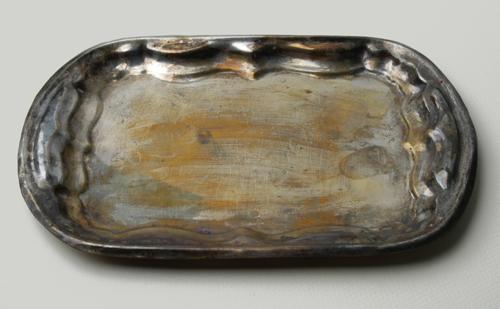
What’s this?
- A silver-plated serving dish.
What’s happened?
- Silver plate is generally a thin layer covering another metal such as nickel.
- Silver cleaners are often mildly abrasive in nature and so gradually wear away at the thin silver coating, exposing the base metal beneath.
- Also, silver tarnish (silver sulphide) contains particles of the original silver surface, so whenever you remove tarnish you are also removing original parts of the object.
Can it be repaired?
- Silver objects can be replated by commercial replating companies, however this will not replicate the original plating technique.
What could have been done instead?
- It is good to minimise the number of times silver plate is polished, in order to reduce wear on the original coating.
- Use less abrasive cleaners.
- Store silver away from potential sources of sulphur (e.g. wool and silk), or store them in protective sealed containers.
- Some commerical companies, such as Hagerty, manufacture cloths that adsorb airborne sulphur. If placed in storage with your silver objects, these cloths help to prevent sulphur from reacting with the silver.
From Christine Ianna